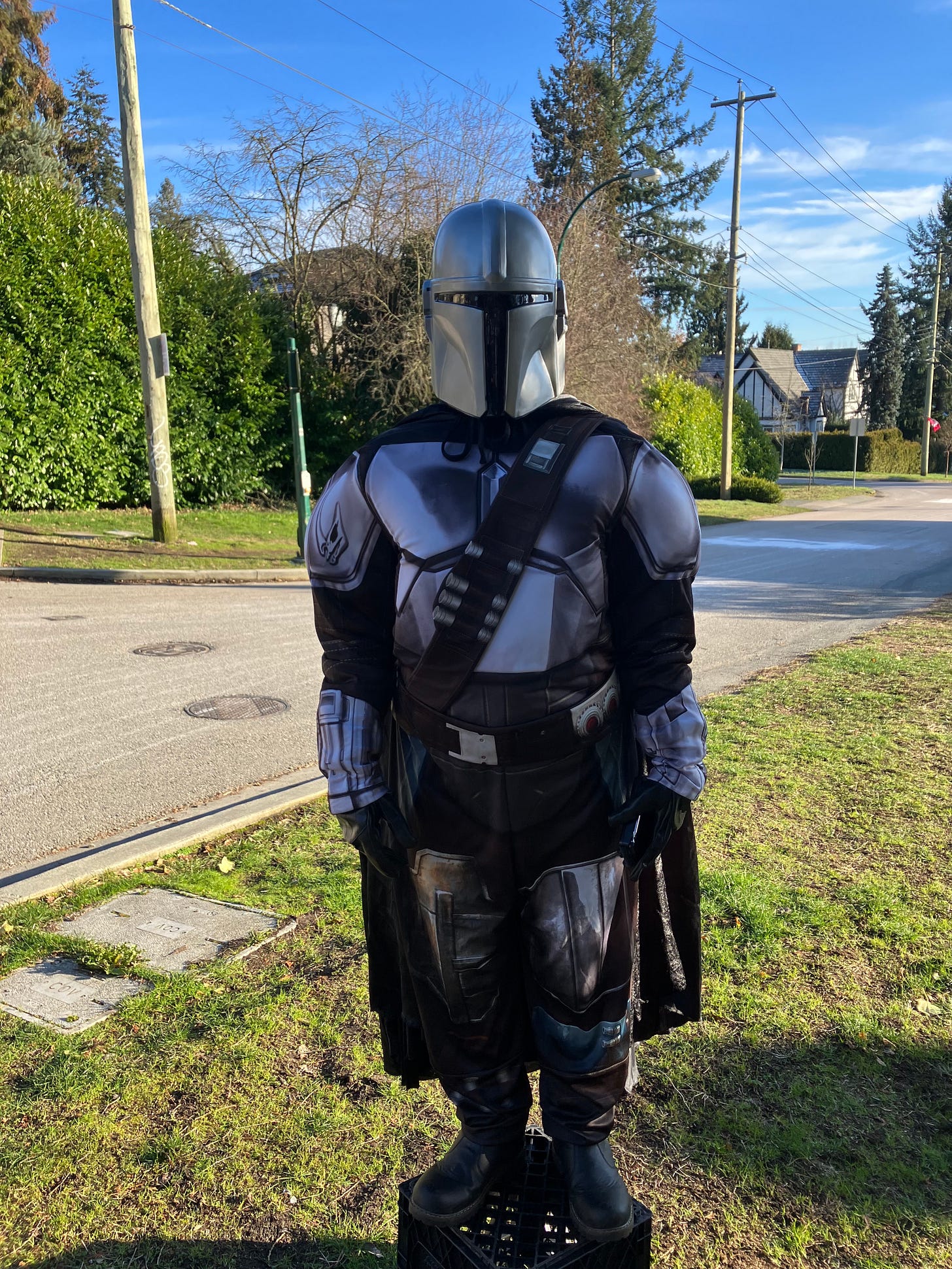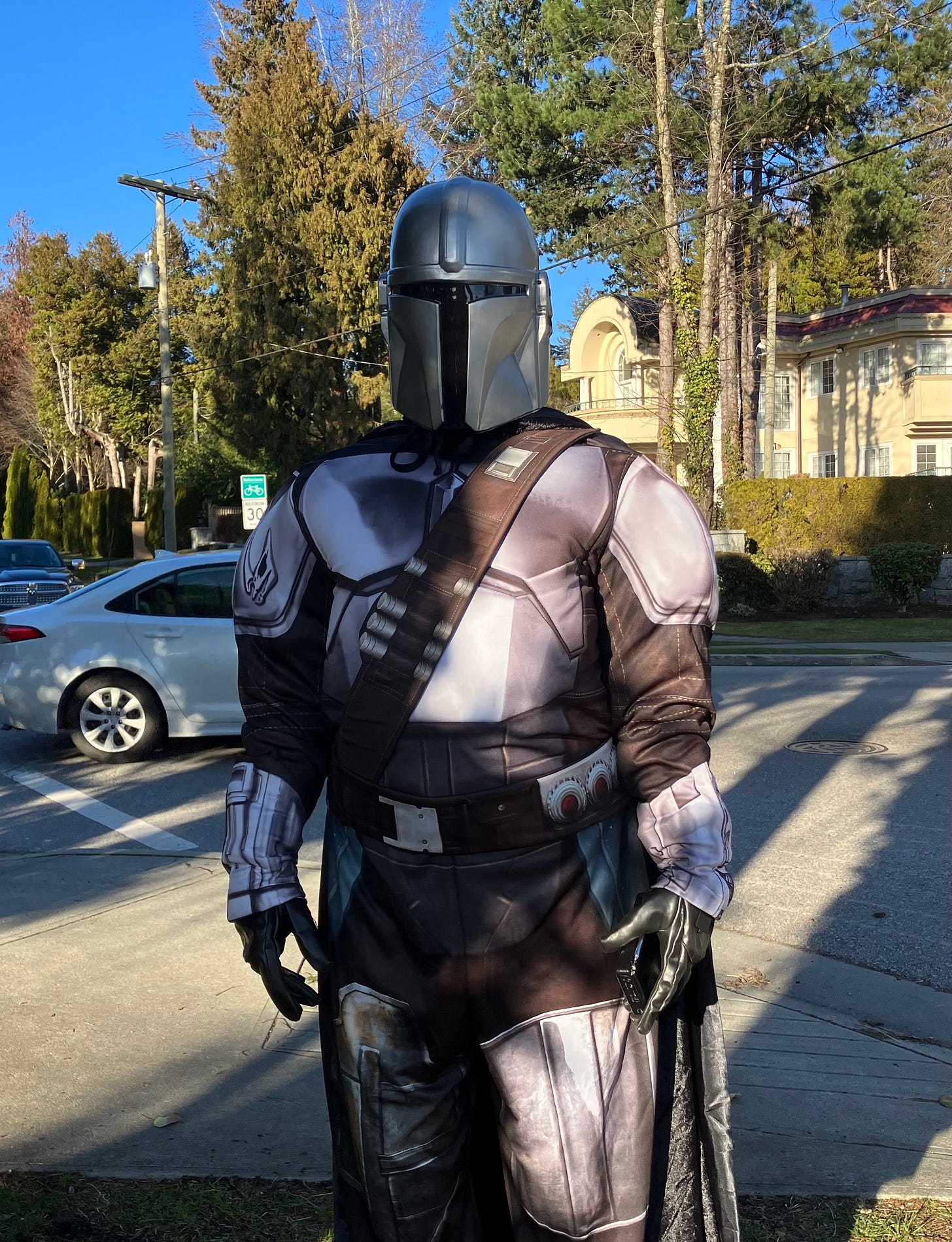The Wood Wide Web
Do trees communicate and work together? Also, how a wounded Confederate soldier turned adversity into opportunity; meeting a Mandalorian and learning a language through music.
Dear Reader,
I'm currently exploring a book called Think Again: The Power of Knowing What You Don't Know, by Adam Grant. The book discusses how we can adopt a flexible mindset to question our own opinions and learn progressively. The purpose of rethinking is to avoid falling into mental traps that are so common in everyday life and instead acquiring wisdom by thinking better. Grant, an organizational psychologist, offers a section on the value of refining work through rough drafts and collaboration. That chapter is really refreshing because it has a great example from a remarkable elementary school teacher. I’ll tell you about it next week.
In this edition, I'm sharing some brief notes about a debate in the scientific community about trees. I'll also recount an inspirational story from the American Civil War. Then, I have a short anecdote about how I met a Mandalorian in Vancouver and some information for anyone interested in improving their Italian skills. I’m also introducing a new feature: a poll for you. :)
I wish to express a very special thanks to Kathy C. for becoming a paid subscriber. Applause! Her support makes it possible to provide more content of all types for more readers. If you know anyone who would be interested in this newsletter, please share it. Just click on the button below.
-Renato
“Wood Wide Web”

As often happens in science, differing opinions are emerging about whether trees form communities and collaborate with each other as proposed in the popular book, Finding the Mother Tree: Discovering the Wisdom of the Forest, by Suzanne Simard of the University of British Columbia.
Simard points out that forests share a vast underground network of fungi that connect trees in shared relationships: the fungi attach to tree roots and use filaments to break down minerals in the soil that trees absorb through their roots, while the trees are a source of sugars that support the fungi.
Research indicates that trees share a complex network of biological connections with the forest floor and with each other, so much so that some have referred to it as the Wood Wide Web. Simard and others have speculated that trees , through these networks of underground organisms, care for each other as families, and redirect resources to protect seedlings or to limit the effects of disease.
This may be a step too far for some scientists. Kathryn Flinn, a plant ecologist and an associate professor of biology, recently wrote a rebuttal piece in Scientific American magazine:
Do trees really talk? Sure. Plants emit hormones and defense signals. Other plants detect these signals and alter their physiology accordingly. But not all the talk is kind; plants also produce allelochemicals, which poison their neighbours.
Another researcher from the University of Alberta, Justine Karst, points out that the evidence regarding fungi networks facilitating tree cooperation is still suggestive and not yet definitive.
To attribute human qualities to forests may not be completely accurate, but there's no doubt that woodlands are great examples of the complexity of ecological networks that deserve further understanding and scientific study.
—
Finding the Mother Tree book: https://bit.ly/3ZBGPin
Recent Scientific American article https://bit.ly/3IagaSH
<>
The legacy of James E. Hanger
An inspiring story of how adversity can be turned into an opportunity appeared on one of my social media feeds this week. I think it's worth retelling.
At the beginning of the U.S. Civil War, a young volunteer from Virginia was severely wounded in the first skirmish of the conflict. James Hanger, a cavalry recruit, was only eighteen when he joined his hometown militia. He was assigned to a small Confederate force guarding a railroad and a farm in Philippi, (West) Virginia. On the morning of June 3, 1861, Union forces started shelling the town. Hanger ran into a barn to get on his horse when a cannon ball struck the building and hit him. It tore off his left leg at the knee. Hanger tried to hide in the barn, but Union scouts found him some time later. His life was saved by a surgeon who amputated his leg just below the hip. It was to be the first of tens of thousands of amputations during the war.
Later that year, he was returned home after a prisoner exchange. At this point, he was a severely depressed young man. He is said to have gone into seclusion in an upstairs room. But in his isolation Hanger found a way to deal with his despair. Having been fitted with a wooden peg leg, he spent the next three months conceiving and building a better artificial limb. Using staves from oak barrels, he created a prosthetic leg that could bend both at the knee and at the ankle.
Later that year, Hanger founded a company to build prosthetics for other wounded soldiers and received his first patent from the Confederate Patent Office.
After the war, Hanger moved to Washington, D.C. He continued expanding the business, opening offices in several other cities. When hostilities broke out in Europe at the start of the First World War, he opened facilities there so that his company could provide artificial limbs to the English and French armies.
Hanger died in 1919 at the age of 76. Today, the Hanger Clinic is still one of the most important suppliers of prosthetics and orthotics in the United States.
—
Sources:
Civil War Profiles: https://bit.ly/3mjlonN
Hanger clinic: https://hangerclinic.com/
<>
Meeting a Mandalorian
I was walking with a friend in South Vancouver the other day when we saw this figure on the other side of the road. It looked like the Mandalorian character from the Star Wars-themed show on streaming service Disney +. The figure was standing at attention on a milk carton and not moving. My friend and I were somewhat curious in a head-scratching sort of way, but continued on our way.
About an hour later we returned to the intersection (Marine Drive and Trafalgar) to find the Mandalorian was still there. As we got closer we noticed that passing cars were honking at the individual in the outfit.
As we passed, I said, "Hi."
From under the mask a female voice answered, "Hi!"
I was surprised to hear a woman. I didn’t know what to say, so I asked how long she had been standing at this intersection.
She said, "About three hours."
I told her that was impressive. She said it wasn't hard.
I asked her why she does it. She said she just likes it. Cars honk.
I thought it was nice to see that commuters were connecting with her in this way.
I asked her name. She said, "Anne."
I wondered if she was the type of person who went to cosplay conventions. "Do you go to Comic Con?"
"No."
"Why not?"
"I don't like crowds," she said.
That was strange, I thought, considering she was out here drawing attention to herself.
It was hard to talk as cars were passing and honking, and Anne also had a transistor radio playing in her left hand.
I asked if it was alright to take her picture. She said she didn't mind, so I got a couple of quick photos.
Then the traffic light changed and my friend and I had to cross. I was hoping to find Anne online. I asked her surname. She told me, but there was a lot of ambient noise and it was hard to hear her through the mask. The name sounded like "Buele."
She said she was on Facebook. I couldn’t find her. I had a lot more questions.
—
The Mandalorian show trailer: https://bit.ly/41DWiAk
<>
"Cantando si impara"
If you are learning Italian and also like music, the Dante Society of BC, with whom I volunteer, has an online course for you.
This is a new project designed for intermediate students who want to improve their knowledge of the Italian language and culture through the lens of music.
The course will run for four weeks beginning on March 9th via Zoom.
Information is here: https://www.dantesocietybc.ca/cantando-si-impara
Next week, I'll tell you about an interesting web talk in English coming up later in the month about a poetic journey through New York City.
<>
Academy Awards poll
Are you a movie buff? Do you enjoy the Oscars and watching your favourite stars? Or would you rather be doing something else ? (Oh lord, anything other than listening to long-winded speeches about movies I don’t care about.)
Let us know.
Voting will be open for three days. Results in next week’s letter.
<>
Sketch corner
Thanks for reading this edition of Zanepost.
Have a great week!
-Renato










The Mandalorian story was interesting-and very odd? And the tree communication network has gotten even more controversial. I heard a tree biologist from the University of Guelph speak on CBC regarding the studies-of which she partook-and said far too premature to extrapolate those findings into fact. Hmmmmm